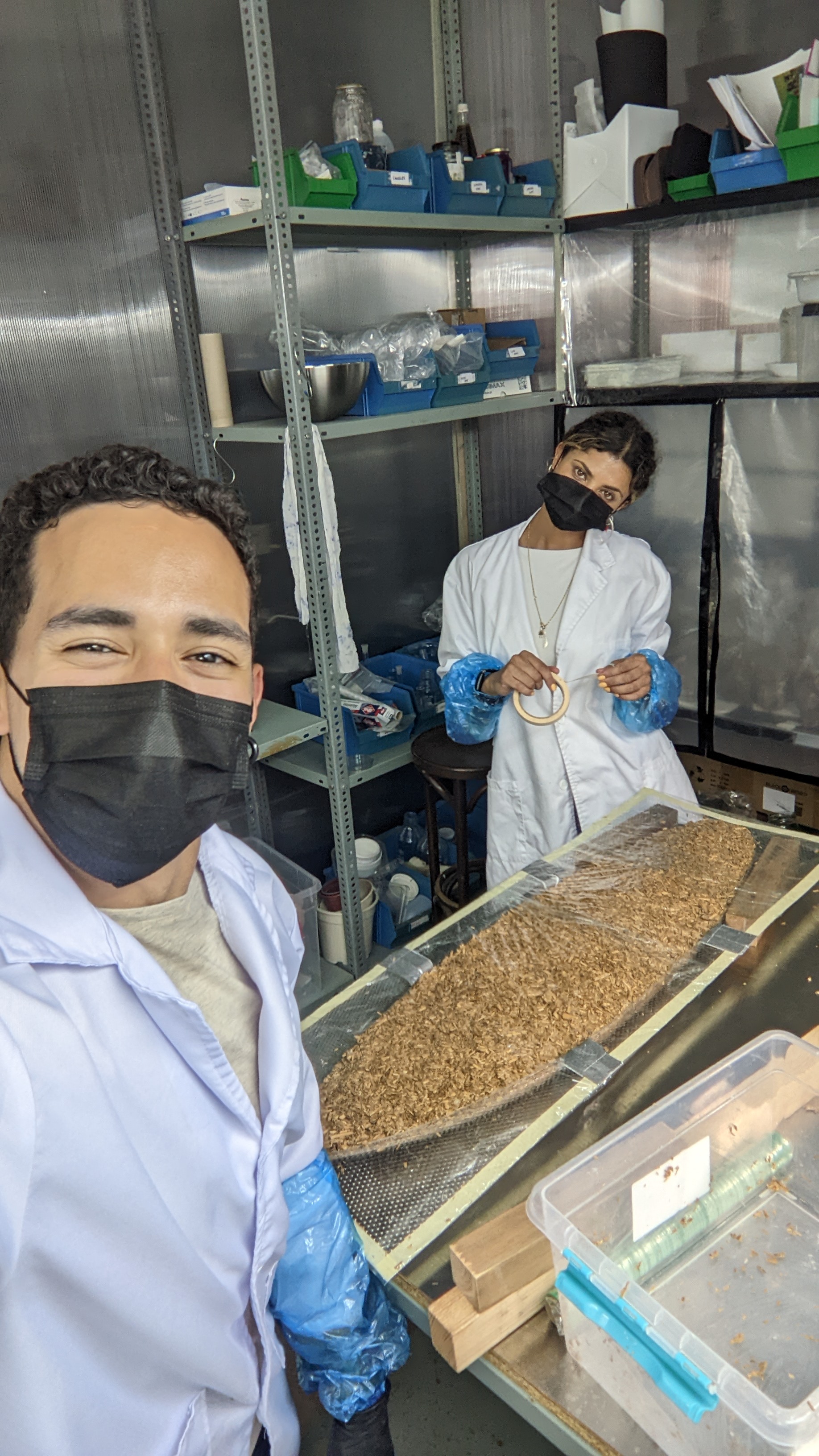Myke Board
Designing for Equality
2022
Sustainable materials are those employed in our consumer and industrial economies that can be produced in sufficient quantities without depleting non renewable resources or upsetting the environment and critical natural resource systems’ established steady-state balance. Modern society has adopted several tools made of materials that cause an imbalance in the environment, such as the surfboard, which is usually made with 3 different layers of plastic and has very little waste disposal solutions. Additionally, the average surfboard creates 375 pounds of CO2 (Gibson, 2017) emissions in the production process alone and uses toxic chemicals (Gibson, 2017) that can harm both workers and the environment. A mycelium based surfboard ‘blank’ can be grown into a mould and shaped without the need for harmful chemicals.
The Myke Board is a mycelium-based surfboard that seeks to replace the harmful materials in
modern surfboards (polyurethane and expanded polystyrene) with more sustainable materials
that are not harmful to the environment or to the shaper. The base substrate is made up of
agricultural waste that is then joined together through a fungal strain known for its material
properties. The result is a low-dense, hydrophobic material that can be shaped like a surfboard
and has a similar performance.
This project is two-fold, it also looks to deconstruct existing polyurethane boards. Under certain
conditions, some fungal strains are able to break the chains of polymers in polyurethane
materials into simple monomers. This then serves as a source of carbon for the fungal strain,
effectively recycling a previously non recyclable material enzymatically.
The purpose of this project is to serve as both an eco-friendly alternative to plastic surfboards
and also to strengthen the link between the surfer and the ocean that has deteriorated over the decades. It highlights the troubling realities of the surfing industry and seeks to alter the
perception of the tools we currently use to experience the world around us.



